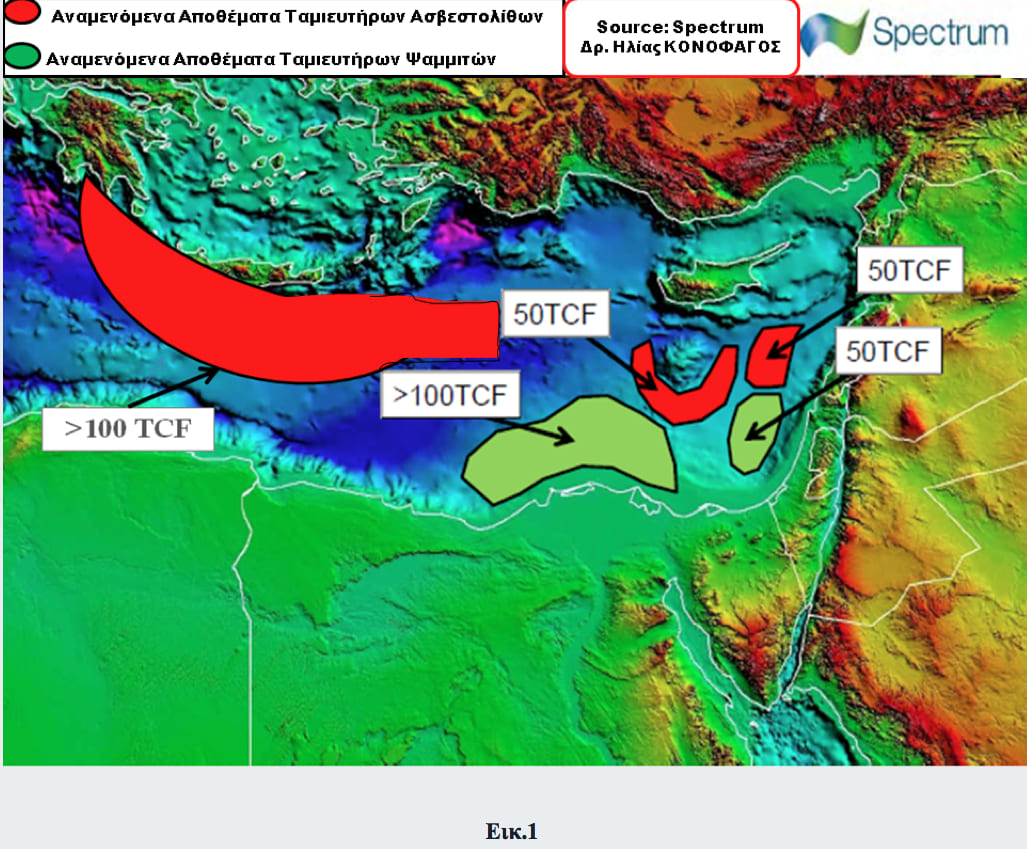24186 - The natural gas in the Eastern Mediterranean old lagoons constitutes a new research model
E, Conophagos,, N. Lygeros, T. Fokianou, A. Foskolos
Translated from the Greek by Athena Kehagias
The latest researches within the Egyptian EEZ, with the Italian company “ENI” resulting in the discovery of the hypergigantic Zohr reserve, gave a new and powerful impetus towards the potential of discovering new gigantic natural gas target reserves within the Eastern Mediterranean (Fig.1). These targets are located in paleo-high limestones, which have been covered with salts of the Messinian era.
The above mentioned prospects have already fascinated a large number of scientists who have begun to revise previous geologic models of the upper Miocene period in the Mediterranean.
The particular period, ie, about 5 million years ago, concerns the so-called Messinian salinity crisis, during which, under the pressure of the African plate, the Gibraltar Strait closed, and the Mediterranean evaporated.
This particular factor led to an extensive environmental catastrophe, with salt depositions which were often in excess of 2,000 meters in thickness.
These salts, in due course were covered by newer sediments.
The above mentioned process of deposition of salts and sediments, caused scientific controversies which continued for about 35 years.
The geophysical recordings, and the Mediterranean drilling samples (ODP program etc.), led to the conclusion, that the quantities of salts present in the Mediterranean, corresponds to the evaporation of its entire contents about 8 times over!
This led to the scientists reaching the conclusion, that during the Messinian salinity crisis, there was at times, an oceanic input of water towards the Mediterranean.
Consequently it seems that during the evaporation period, paleo-lagoons were preserved in the Mediterranean, both in deeper points and in some of its plateaus as well, (see. Figure 2).
The existence of paleo-high limestone units at the coasts of the above mentioned paleo-lagoons, as the company ENI stated, led to the creation of Reef reserves, which in turn hosted the biogenic natural gas, which was generated from the enormous quantities of organic matter, that was concetrated within the lagoons.
All these occurred either prior, and or during the covering of the specific reefs by waterproof layers of salts.
Following EΝI’s two drillings within the Zohr reserve, paleo-lagoon positions where located in both Cyprus and South of Crete, where the geophysical surveys indicate the existence of at least 10 more Zohr type target reserves.
Based on all the above, we consider that the new horizons which are opened to the research re: natural gas reserves in both Cyprus and South of Crete, are extremely auspicious.
It remains now for the governments of the two countries to pay the due attention to these prospects, and to try to attract the necessary hydrocarbon research and production investments ASAP, because it is a matter of high strategy.


